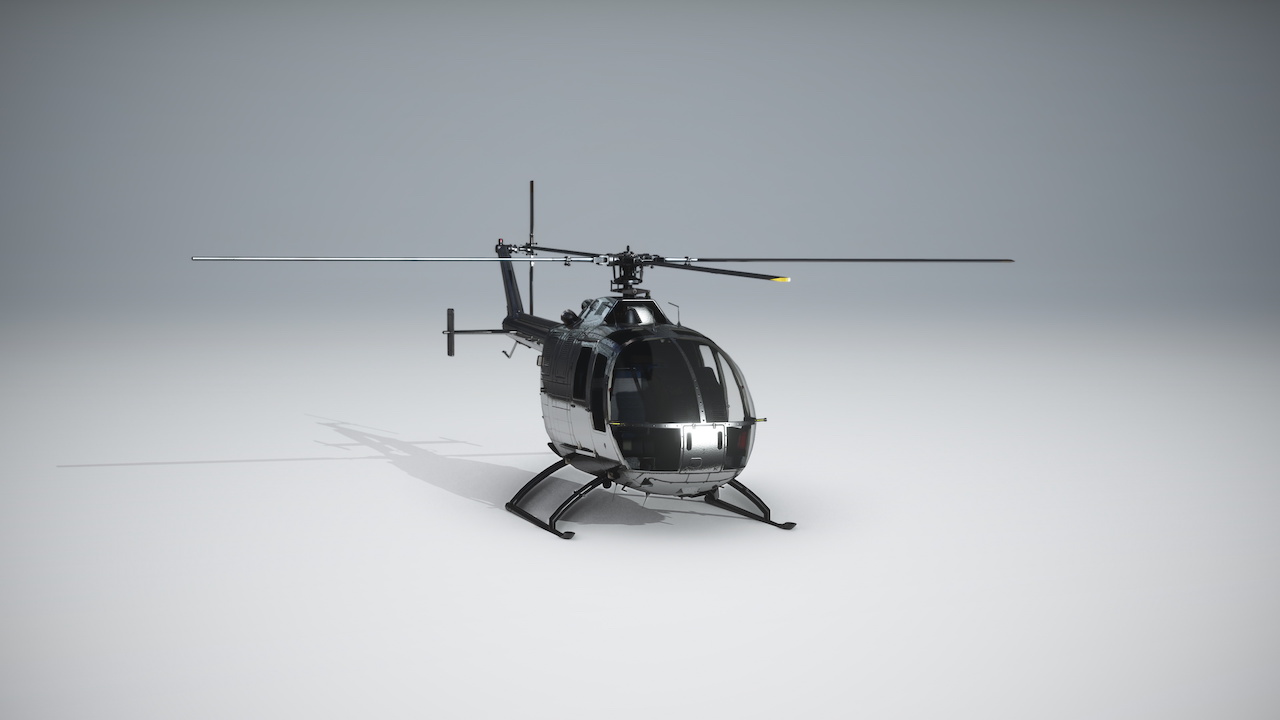Initially conceived in the mid-1960s, the BO-105 was the world’s first twin-engine light helicopter. The design offered increased power, greater density altitude performance, greater speed, and greater load carrying capacity over rotorcraft in production at the time. The inherent redundancy of two engines availed it to a wide audience of end users, notably military customers. The BO-105 was developed with a hingeless (sometimes called rigid) rotor head, using a milled block of titanium to which its four rotor blades are mounted. This provides a dramatic level of maneuverability and led to the BO-105’s status as legendary due to its ability to perform aerobatics.
The airframe was produced in a wide number of variants and it has served a broad spectrum of customers, including all types of civil operators, police and public safety, scientific, and military, among others.
The BO-105 measures 38 feet, 11 inches in length, stands 9 feet, 10 inches tall, and has a 4-blade main rotor system with a diameter of 32 feet, 3 inches. It is powered by two Allison / Rolls-Royce 250-C20B turboshaft engines that each produce up to 420 horsepower. It has a range of 410 miles, it climbs at 1,378 feet per minute, and it has a service ceiling of 17,000 feet above sea level. It has an in-ground effect hover limit of 8,400 feet above sea level and an out-of-ground effect hover limit of 5,300 feet. The helicopter cruises at 127 miles per hour and has a maximum cruise speed of 150 mph.
Features:
• Highly detailed model, fully animated
• 3D cockpit animated 90% (all gauges animated)
• Frame rate friendly in single and multiplayer
• Highly detailed Textures, 4k-8k, high definition, PBR

